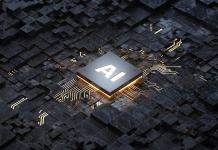Exploring the Relationship Between Natural Language Processing and Machine Learning in AI
In the world of artificial intelligence (AI), two key subtopics often discussed in tandem are natural language processing (NLP) and machine learning (ML). While both play crucial roles in advancing AI technologies, they have distinct capabilities, use cases, and challenges.
Machine learning, a foundational field in AI, focuses on training computer systems to perform tasks without explicit programming. ML algorithms learn from historical data sets, finding patterns and relationships to improve performance over time. On the other hand, NLP specifically enables computers to comprehend and generate human language, often utilizing ML algorithms during training.
ML offers benefits such as task automation and scalability, with approaches including supervised, unsupervised, semi-supervised, and reinforcement learning. Enterprises can leverage ML for various use cases, from predictions and content generation to fraud detection and process automation.
NLP, on the other hand, involves training computers to understand and mimic human language, enhancing communication and workflow efficiency. Techniques in NLP include syntax-driven and semantic approaches, with applications ranging from sentiment analysis to speech recognition.
While NLP often incorporates ML and deep learning techniques for language comprehension, the two fields have unique characteristics. ML focuses on identifying patterns in data, while NLP centers on language-specific tasks. ML applications span anomaly detection and predictive analytics, while NLP specializes in machine translation and text classification.
Both ML and NLP face challenges such as data quality, cost, and bias. ML models require large, high-quality datasets and trained experts, while NLP grapples with the complexity and nuance of human language. Despite these challenges, the advancements in ML and NLP continue to drive innovation in AI technologies.
Overall, the synergy between ML and NLP showcases the diverse capabilities of AI and highlights the ongoing evolution of these fields in shaping the future of technology.















